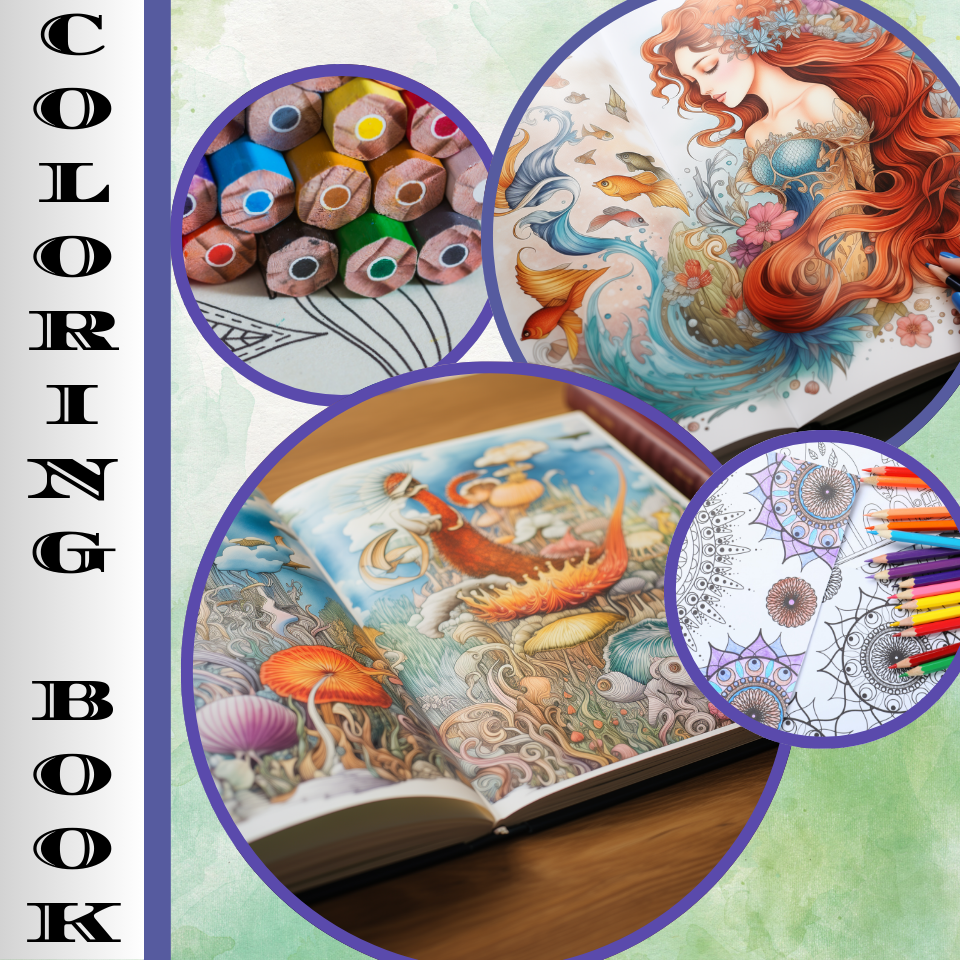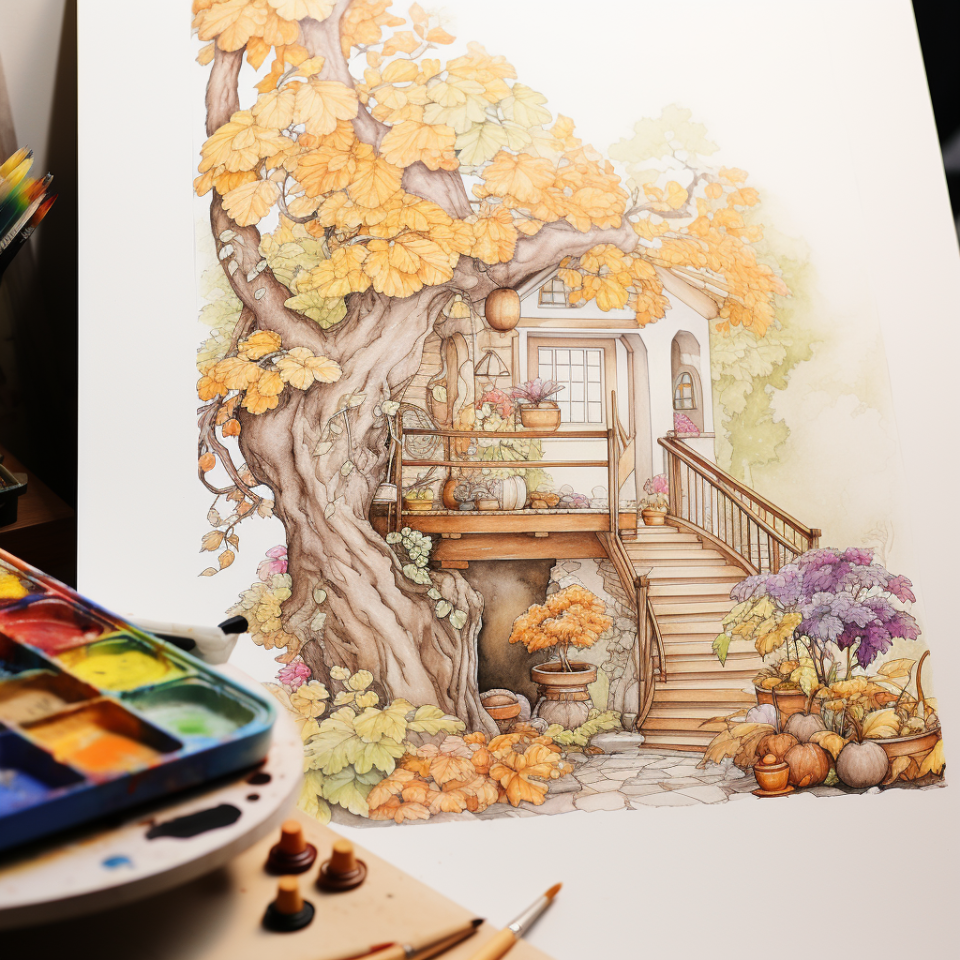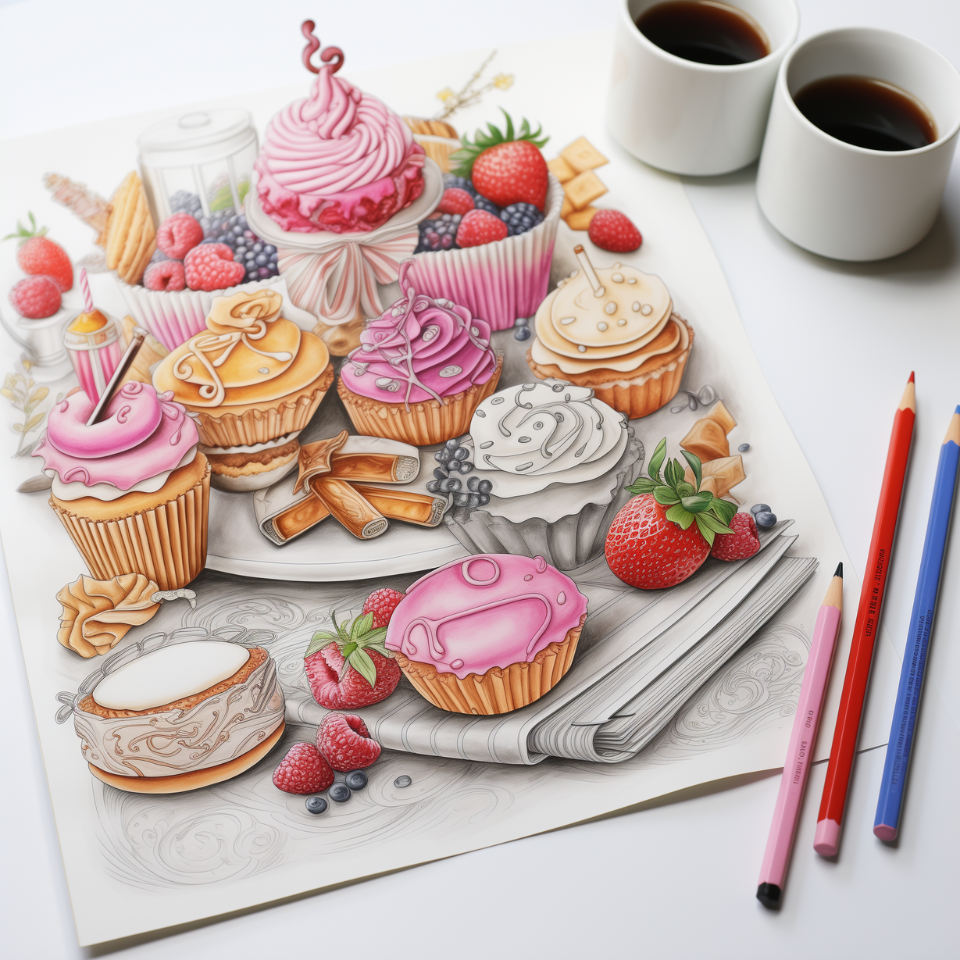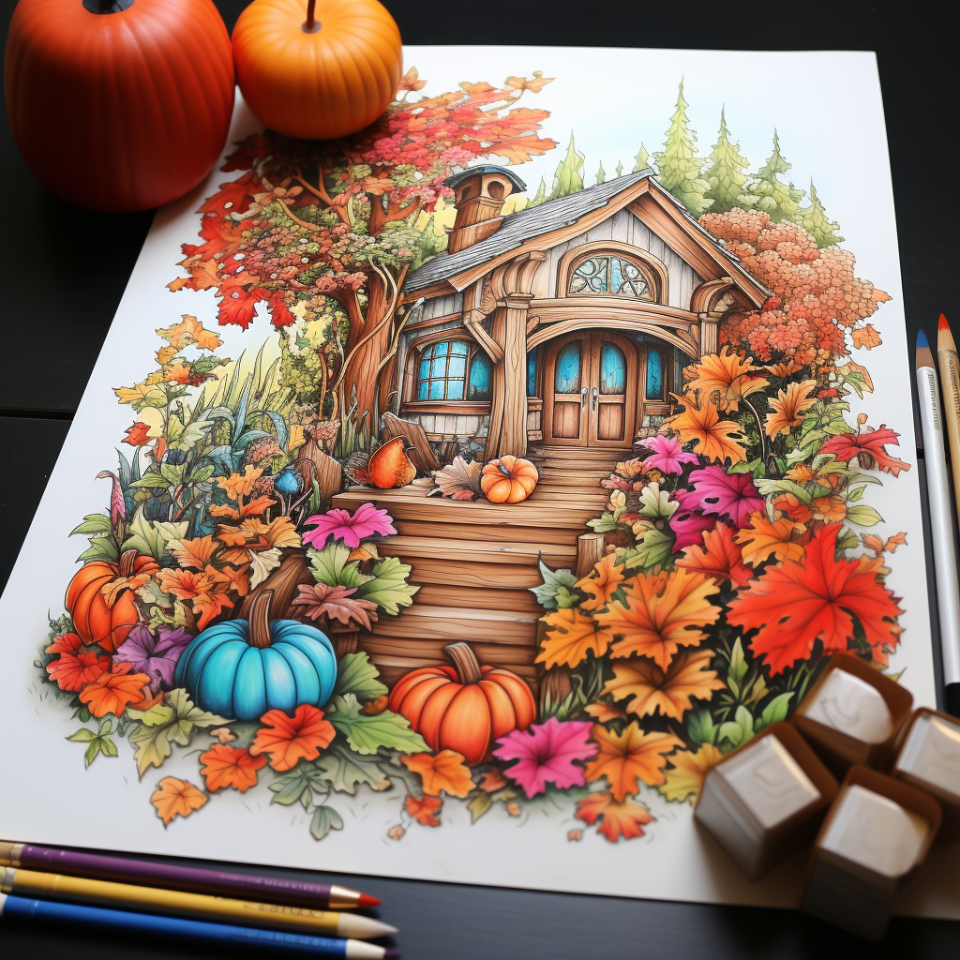Coloring books have been around for over a century, but their transformation from educational tools to creative outlets has been nothing short of remarkable. From the first books designed to teach children about art and nature to today’s intricate adult coloring books that promise stress relief and mindfulness, coloring books have continually adapted to meet the changing needs and desires of their users.
Table of Contents

The Origins of Coloring Books
Coloring books as we know them began in the 19th century. Though art and drawing had been part of education for centuries, the concept of filling in outlined images with color was a relatively new idea.
1. Early Educational Beginnings
The first coloring books were created to educate children. These early books were used to teach not only art but also other subjects like geography and natural history. The idea was to engage children’s interest by allowing them to color in the images related to their studies.
The First Coloring Books in the 1800s
The late 1800s saw the introduction of some of the earliest coloring books, which were mainly black-and-white illustrations meant to be hand-colored. These books focused on simple shapes, often paired with educational content, so children could learn while they played.
2. The McLoughlin Brothers and the First Coloring Book
In 1880, the McLoughlin Brothers, American publishers known for their children’s books, released “The Little Folks’ Painting Book.” Considered the first commercially successful coloring book, it allowed children to use watercolors to fill in pre-drawn illustrations, marking a new era in creative play.
“The Little Folks’ Painting Book”
This book was revolutionary in that it combined fun with education, giving children the freedom to experiment with colors while learning about the world around them. The book was so successful that it inspired other publishers to create similar works, establishing coloring as an important part of children’s education.

The Golden Age of Coloring Books in the 20th Century
By the early 20th century, coloring books became a staple in households, schools, and even advertising campaigns. With the growing availability of crayons and the rise of mass-produced books, the popularity of coloring soared.
1. Post-War Coloring Book Boom
The post-World War II era marked the golden age of coloring books. Families in the 1940s and 1950s embraced this affordable and entertaining activity. It was during this time that coloring books became closely associated with childhood fun, as brands began producing books with themes aimed directly at kids.
Growth in the 1940s and 1950s
Coloring books became widely available, thanks in part to improvements in printing technology, which made them more accessible to families across different income levels.
2. Branding and Commercialization
The rise of branding in coloring books really took off in the mid-20th century. Characters from popular TV shows, movies, and comics started to appear in coloring books, linking children’s favorite fictional worlds to their everyday activities.
Disney, TV Shows, and Movie Tie-Ins
Disney was one of the first companies to see the potential of branded coloring books, producing books that featured beloved characters like Mickey Mouse and Snow White. This paved the way for other companies to create tie-ins with popular cartoons, movies, and even superhero franchises.
3. The Role of Crayola in Popularizing Coloring
Crayola, synonymous with crayons, played a major role in popularizing coloring. Founded in 1903, Crayola not only supplied the tools needed to color but also developed kits and sets specifically for coloring books. Their crayons became the gold standard for generations of kids.
Crayola’s Influence on Coloring Culture
Crayola’s rise in popularity coincided with the explosion of coloring books, and the two became inextricably linked. Crayola’s crayons, with their wide array of colors, allowed children to unleash their imagination on the pages of coloring books in new and exciting ways.

Coloring Books in the Digital Age
As technology advanced, so too did the way we experience coloring. Digital tools and apps have brought the joy of coloring into the digital world, making it more accessible and convenient than ever before.
1. The Transition to Digital Coloring
In the 21st century, the introduction of digital coloring platforms revolutionized the art of coloring. Now, users could color on their tablets or smartphones using apps specifically designed for this purpose.
The Pros and Cons of Digital vs. Traditional Coloring
Digital coloring offers numerous benefits, such as unlimited color choices, the ability to undo mistakes, and portable convenience. However, many still prefer the tactile experience of traditional coloring books, where the feel of crayon or pencil on paper adds to the enjoyment.
2. Online Communities and Printable Coloring Pages
The internet has also allowed for the rise of free printable coloring pages and online coloring communities, where enthusiasts can share their artwork and ideas. Sites like Pinterest are full of user-generated designs and resources that cater to a wide range of interests and skill levels.

The Rise of Adult Coloring Books
The 2010s witnessed an unexpected boom in adult coloring books. As more adults turned to creative outlets for stress relief, coloring books became a trendy yet therapeutic activity.
1. The 2010s Adult Coloring Book Craze
Adult coloring books took the market by storm, driven by the growing interest in mindfulness and relaxation. Titles like “Secret Garden” by Johanna Basford offered intricate designs that appealed to adults looking for a creative way to unwind.
Mindfulness and Relaxation Through Coloring
Coloring has been shown to reduce stress and promote relaxation by encouraging focus and creativity. Many adults found that coloring provided a break from the digital world, offering a peaceful, screen-free activity that allowed for personal expression.
2. Intricate Designs and Mandalas
Unlike children’s coloring books, which often feature simple outlines, adult coloring books tend to have more detailed and complex designs, such as mandalas and abstract patterns. These intricate designs not only challenge the mind but also engage the brain in a way that promotes calm and mindfulness.
Coloring Books as a Form of Art Therapy
Coloring books are increasingly being used as a tool for art therapy, especially for people dealing with stress, anxiety, and other mental health issues.
1. The Connection Between Art and Mental Health
Studies have shown that creative activities like coloring can have a positive impact on mental health. The act of coloring engages the mind, reduces anxiety, and provides a calming effect, making it an effective therapeutic tool.
2. Incorporating Coloring into Mental Health Treatments
Therapists often use coloring books in their sessions as a way to help clients express emotions non-verbally. The repetitive action of coloring, combined with the choice of colors and designs, allows people to reflect on their inner thoughts and feelings.

Cultural and Social Impact of Coloring Books
In recent years, coloring books have expanded their themes to reflect the diversity and complexity of modern life.
1. Expanding Themes and Representations
Modern coloring books are no longer limited to simple cartoon characters. They now include representations of diverse cultures, body types, and experiences, offering inclusive content that reflects a more socially aware world.
Inclusion of Diverse Cultures, Bodies, and Experiences
Books like “The Big Fat Activity Book for Pregnant People” or “Feminist Coloring Book” cater to different demographics, breaking traditional molds and allowing for more representation.
2. Coloring Books as Political and Social Commentary
Some coloring books tackle serious issues or offer satirical takes on politics and society. These books often use humor or art as a form of protest, addressing subjects like the environment, political figures, and social justice movements.
Conclusion
The evolution of coloring books from simple educational tools to a global phenomenon speaks to their enduring appeal. Whether in digital form or on paper, coloring books have grown and adapted to meet the needs of each generation, offering creativity, relaxation, and a platform for artistic expression. As coloring continues to evolve, its role in art, education, and therapy will no doubt remain significant.